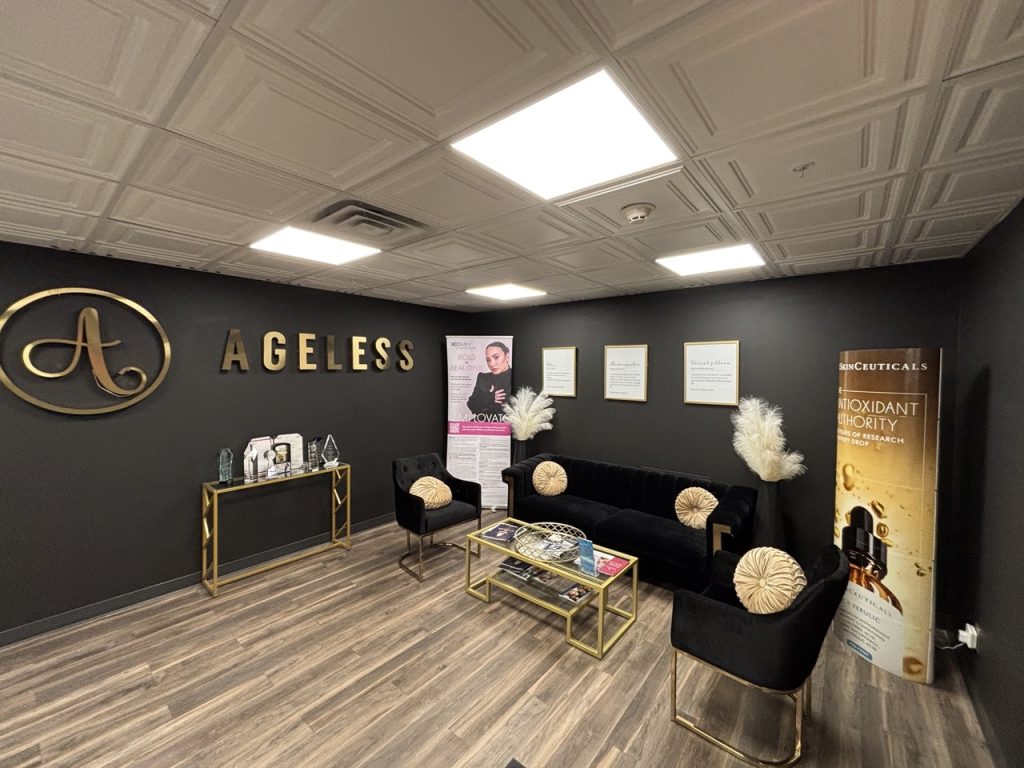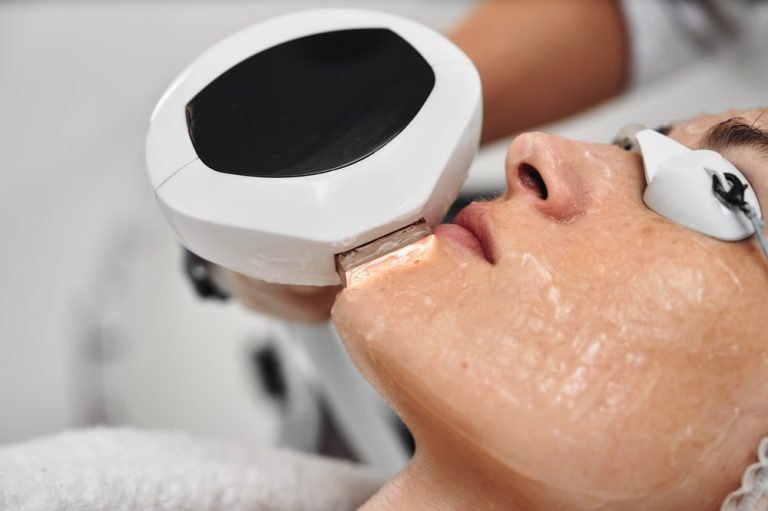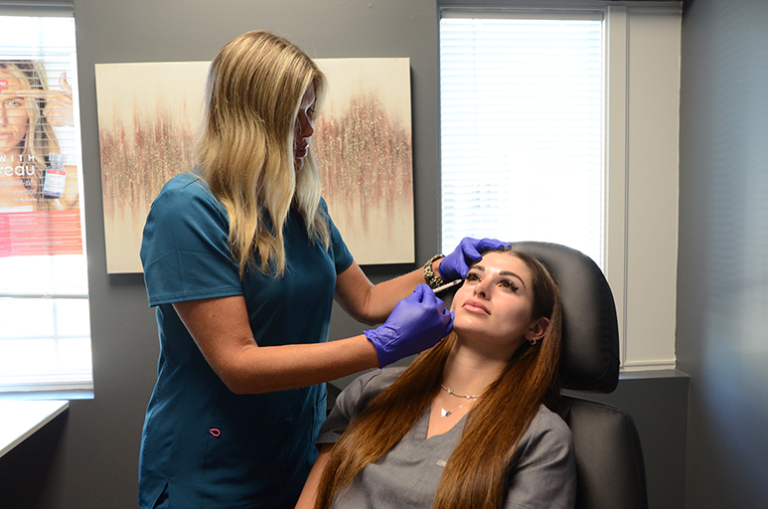PDO Threads vs. Fillers: Which Is Right for You?
If you’re looking for a non-surgical way to lift, smooth, or rejuvenate your face, you’ve probably come across two popular treatments: PDO threads and dermal fillers. Both are effective. Both are injectable. But they work in very different ways—and understanding those differences is the key to choosing the right option for your goals.
At Ageless Aesthetics, we offer both treatments at our Indianapolis and Greenwood locations, and patients often ask us which one they should choose. The answer depends on your anatomy, skin condition, and aesthetic priorities. This guide will walk you through the pros, differences, and ideal candidates for each—so you can make a confident, informed decision.
What Are Dermal Fillers?
Dermal fillers are injectable gels designed to add volume beneath the skin. Most are made of hyaluronic acid (HA), a substance naturally found in the body that hydrates and plumps the skin. Fillers are incredibly versatile—they can lift cheeks, smooth smile lines, define jawlines, enhance lips, and even contour the nose.
When injected properly, fillers provide instant results with minimal downtime. They’re often used to restore lost volume due to aging, correct facial asymmetries, or enhance features that need more definition. Fillers typically last 6 to 12 months, depending on the area treated and the product used.
What Are PDO Threads?
PDO threads, or polydioxanone threads, are thin, dissolvable sutures placed beneath the skin to lift and reposition tissue. Unlike fillers, they don’t add volume—instead, they physically lift sagging areas while stimulating collagen as they dissolve.
Threads are ideal for people experiencing mild to moderate skin laxity, especially in the lower face and jawline. Common treatment areas include the jowls, cheeks, brows, and neck. Results appear gradually, improving over the course of weeks as collagen builds around the threads. The lifting effect typically lasts 9 to 12 months, and skin quality can continue improving for even longer.
How They Work: Volume vs. Lift
The core distinction lies in what each treatment does best. Fillers replace volume that has been lost with age or genetics. They plump the skin from underneath, giving a fuller, smoother appearance. Threads reposition what has shifted due to gravity or collagen loss. They provide a subtle “pull” that redefines sagging contours.
For example, if you’re concerned about sunken cheeks or under-eye hollows, fillers are likely the better fit. But if your issue is loose skin along the jawline or a drooping mid-face, threads can create lift and tension where filler alone might not be enough.
What to Expect During Each Treatment
The experience of getting fillers is quick and relatively easy. After a brief consultation, your provider cleanses the area and applies a topical anesthetic. The filler is injected using a fine needle or cannula, and the results are immediate. There may be some swelling or bruising afterward, but downtime is minimal.
PDO thread treatment is slightly more involved. After numbing the area with local anesthetic, your provider uses a thin needle or cannula to insert the threads beneath the skin in specific vectors to lift and anchor tissue. You may feel some pressure or tightness, but pain is minimal. Results continue to improve as the threads stimulate collagen over time. There may be mild swelling or tenderness for a few days, and some patients feel tightness in certain facial movements, which fades as the threads integrate.
One Size Doesn’t Fit All
While both treatments are effective, they’re not interchangeable—and not every patient is a candidate for both. Some people will benefit most from filler, others from threads, and many from a combination of the two.
Here are a few general guidelines:
- If you’ve lost volume in specific areas (like the cheeks or lips), fillers are typically the better choice.
- If you’re starting to notice sagging skin but aren’t ready for surgery, threads may be more effective.
- If you want both structure and volume in the same region, a hybrid approach can yield the most natural results.
The best outcomes come from a personalized strategy. At Ageless Aesthetics, we assess your face holistically and create a plan that considers your facial anatomy, skin tone, degree of aging, and desired result.
Small Differences That Matter
Another factor to consider is timing and expectations. Fillers give you instant gratification—you’ll see the difference immediately after your appointment. Threads take a bit longer to show their full effect. The lifting is noticeable within days, but the skin-firming benefits develop over time as collagen increases.
There’s also a psychological element. Patients who prefer subtle, gradual change often lean toward threads. Those who want a more obvious before-and-after may opt for filler.
Both treatments require maintenance. Fillers may need to be repeated every 6 to 12 months depending on the area, while threads generally last closer to a year, with some patients opting for touch-ups at 9-month intervals.
When to Combine Both
For many patients, the most effective approach involves using both threads and fillers strategically. Threads can reposition tissue and define the jawline or lift the cheeks, while fillers restore volume in places like the nasolabial folds, temples, or under the eyes.
Combining both gives a more complete rejuvenation—and often a more natural result. For example, someone with jowling and flat cheeks might receive threads to reposition the skin and a small amount of filler to replace lost mid-face volume. The outcome looks smoother, more lifted, and still very much like you.
Are There Any Risks?
Both PDO threads and fillers are FDA-cleared and safe when performed by trained professionals. Like any aesthetic treatment, they come with minor risks, such as swelling, bruising, or mild discomfort. Threads may cause temporary dimpling or puckering, especially in thinner skin, but these usually resolve within a few days.
Choosing an experienced provider is crucial. Complications are rare, but expert technique and anatomical knowledge are essential to avoid issues like asymmetry or product migration. At Ageless Aesthetics, our providers are highly trained in both injection and thread placement and always prioritize safety and natural outcomes.
Which Option Is Right for You?
The answer depends on your anatomy and your goals. If your primary concern is volume loss, fillers offer immediate correction. If you’re seeing early signs of sagging or laxity, PDO threads may provide a subtle lift and longer-term collagen support. If your concerns fall into both categories, combination therapy is often the best answer.
During your consultation, we’ll take detailed photos, evaluate your face from multiple angles, and talk through your preferences. We’ll never upsell or overfill—just guide you toward results that are effective, proportional, and uniquely tailored to your features.
The Final Word
Fillers and threads are both powerful tools—but knowing when and how to use each one makes all the difference. At Ageless Aesthetics, we don’t believe in one-size-fits-all beauty. We believe in custom plans, skilled technique, and long-term patient relationships.
If you’re ready to explore your options, we’re ready to help you lift, restore, and refine—with no surgery required.
Call or text 317.855.9100 to schedule your consultation.
Let’s choose the right treatment—together.











